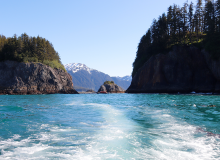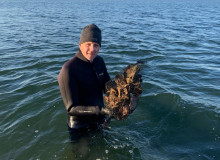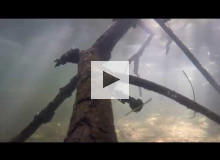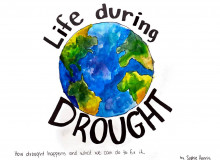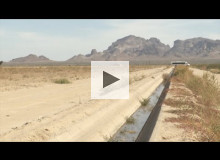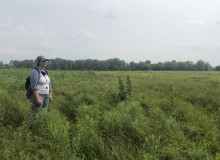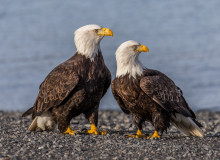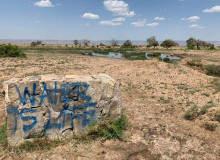Water
George Washington University
Climate change doesn't just exist in data but before our eyes. Lindblad Expeditions naturalist Tim Martin explains that the rust-colored trimlines imprinted on Alaskan mountains paint a clear picture of glacial recession.
Georgetown University
Through regenerative aquaculture, Michael Doall is using the ecosystem services of oysters and kelp to clean up our oceans and our plates.
Planet Forward Correspondent | Eckerd College
In this video essay, Planet Forward Correspondent Kaitlyn Copland reflects on her coastal upbringing and connects it to the importance of ocean conservation and education.
Columbia University
This illustrated children's book explains how drought happens and what individuals (even kids!) can do to conserve water.
Planet Forward Correspondent | Arizona State University
According to N-Drip’s Chief Sustainability Officer, Seth Siegel, their technology brings a new irrigation system that could help save 50% of the water used in Arizona’s agriculture.
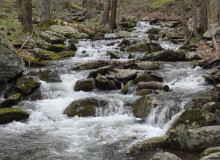
Cascades at Shenandoah National Park in Virginia (Jeff DeWitt/Unsplash https://unsplash.com/license).
Northwestern University
An EPA federal advisory committee met last week to discuss PFAS research and the EPA's new PFAS strategic plan. Delaney Nelson reports for Medill.

A giant mural featuring the climate activist Greta Thunberg was in Bristol, England, created by local street artist Jody in 2019. As of July 2021 the mural was painted over and is no longer visible. (Duncan Cumming/Flickr/Creative Commons 2.0)
Planet Forward Correspondent | George Washington University
It’s the sixth day of COP26, and today the conference is focusing on youth empowerment, and water, oceans and coastal zones.
Medill News Service, Northwestern University
Colleen O’Brien and Jen Jenkins are exploring whether a cluster of five grassland regions that form a rare natural oasis just south of Chicago could be dedicated as a space for stormwater collection to help mitigate flooding in the region.
George Washington University
Scientists recently identified an infectious cyanobacterium as the origin of vacuolar myelinopathy, a lethal neurological disease in wildlife.
Arizona State University
Water is a precious commodity that’s scarce in many places across the U.S. but even more so in rural Native American communities like the Navajo Nation, where a virus that requires hand-washing has taken a heavy toll.

